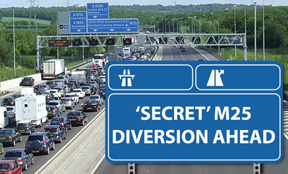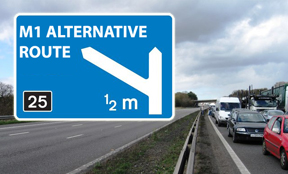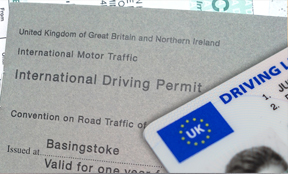
 Find out the basics around charging
your electric car in the UK
Find out the basics around charging
your electric car in the UK
Challenges when charging electric cars
Limited Charging Infrastructure
One of the primary challenges for new EV owners in the UK is the limited charging infrastructure. Although the number of charging points is increasing, they are not yet as common as petrol stations.
This can lead to difficulty finding convenient charging locations - or available chargepoints - especially in rural areas and on busy routes during peak times.
Charging speed variability
Charging speeds dictate how long you will need to be stationary while ‘filling up’ your EV as you previously would have done quickly at a traditional service station.
Times to top up with power can vary significantly depending on the type of charger used. Standard home chargers (3-7 kW) can take several hours to fully charge a car, while fast chargers (7-22 kW) and rapid chargers (43-50 kW) reduce this time considerably - often down to 20-30 minutes for a decent level of battery charge.
However, rapid chargers are not as widely available, which will prove extremely frustrating for drivers needing a quick top-up to reach an appointment or event for example.
Compatibility issues
Not all EVs are compatible with all types of chargers. Different manufacturers use different charging standards (e.g., CCS, CHAdeMO, Type 2), which can complicate the charging process.
Ensuring compatibility before reaching a charging station is crucial to avoid inconvenience.
Where to charge your EV
Home charging
Charging at home is the easiest and by far the most cost-effective option for many EV owners. Installing a home charging point allows overnight charging, ensuring the vehicle is fully charged each morning. Government grants, such as the Electric Vehicle Homecharge Scheme (EVHS), can help offset installation costs.
Workplace charging
Many employers are installing charging points to encourage the use of electric vehicles for their workers - especially important with many fleets pushing company car drivers to go electric.
Charging at work can be helpful for those with longer commutes. Additionally, the Workplace Charging Scheme (WCS) provides financial support to businesses for the installation of charging such points.
Public charging points
Public charging stations are increasingly available in various locations, including shopping centres, car parks, and service stations.
Websites and apps can help locate these stations, ensuring drivers can plan their routes and stops to cut delays and help relieve range anxiety.
On-street charging
In urban areas, on-street charging solutions are being implemented to help residents without off-street parking.
Local councils are rolling out charging points integrated into lampposts and kerbsides, making it easier for city dwellers to charge their vehicles overnight.
However, it is worth checking your local area before committing to buying an electric car, as there are currently only a limited number of these in many towns - and demand can be high.
Subscribe for free motoring and travel news here - support independent journalism
Wait times for chargers - and how to beat them
Planning ahead
One of the best ways to manage wait times is to plan ahead. Using apps and websites to locate charging stations and check their availability can save time and reduce stress when out on the road for business, pleasure or heading to the airport to catch your flight.
Many apps provide real-time updates on the status of charging points, allowing drivers to avoid busy locations and help ensure they get to their destination on time.
Off-peak charging
Charging during off-peak hours can also help reduce wait times. Early mornings, late evenings, and overnight are generally less busy making it easier to find an available charger.
Additionally, some charging networks offer reduced rates during off-peak periods, providing further incentives to charge outside of busier times of the day.
Booking systems
Some charging networks offer booking systems, allowing drivers to reserve a charging point in advance. This can be particularly useful in busy areas or during peak travel times, ensuring a charging spot is available when needed.
Apps to help with charging
Zap-Map
Zap-Map is one of the most popular apps for EV drivers in the UK - or beyond in countries such as France.
It provides a comprehensive map of charging points, including real-time status updates, user reviews, and compatibility information.
Zap-Map also offers route planning features, helping drivers find the most efficient charging stops along their journey.
PlugShare
PlugShare is a global app that includes extensive information on charging points in the UK.
It allows users to filter by charger type, network, and availability, ensuring they can find the most suitable charging station.
The app also includes user reviews and photos, providing valuable insights into the condition and reliability of charging points.
ChargePoint
ChargePoint is another widely used app that offers detailed information on charging stations.
It includes features like real-time availability, route planning, and the ability to start and stop charging sessions remotely.
ChargePoint also provides notifications when a charging session is complete, helping users manage their time effectively.
EV Navigation
EV Navigation is designed specifically for electric vehicle drivers, offering route planning with charging stops integrated into the journey.
The app takes into account the vehicle's range, current charge level, and available charging points, ensuring drivers can reach their destination without running out of power.
Pod Point
Pod Point's app allows users to locate Pod Point charging stations, start and stop charging sessions, and monitor their charging progress.
The app also includes information on charging costs and availability, helping drivers plan their charging stops efficiently.
Installing a home charger for your EV: What it involves
As electric vehicles (EVs) become more popular, installing a home charger is a convenient and efficient way to ensure your car is always ready to go. This article outlines the in-depth process of installing a home charger, including costs, the installation process, timeline, and who to contact.
The Costs
Initial costs
The cost of installing a home EV charger can vary based on the type of charger and installation complexity. Generally, the price range for a home charging unit (typically 7 kW) is between £300 and £800. Installation costs can range from £300 to £600, depending on the electrical work required.
Government grants
The UK government offers financial assistance through the Electric Vehicle Homecharge Scheme (EVHS). This grant covers up to 75% of the installation cost, capped at £350. To qualify, you must have off-street parking and an eligible electric vehicle. Applying for the grant can significantly reduce the overall cost.
The Installation Process
Step 1: Choosing a charger
First, decide on the type of charger you need. Most residential installations use a 7 kW charger, which provides a good balance between cost and charging speed. Ensure the charger is compatible with your EV and has features like Wi-Fi connectivity for monitoring and scheduling charging sessions.
Step 2: Site survey
Contact a certified installer to conduct a site survey. During this survey, the installer will assess your electrical system, determine the optimal location for the charger, and identify any potential issues. This survey ensures the installation will be safe and efficient.
Step 3: Electrical work
Before installation, your home's electrical system may need upgrades to handle the additional load. This could include installing a dedicated circuit, upgrading the consumer unit (fuse box), or increasing the main electrical supply capacity. The installer will discuss these requirements during the site survey.
Step 4: Installation
On the day of installation, the process typically takes around 2 to 4 hours, depending on the complexity of the electrical work. The installer will:
- Mount the charging unit on a wall or a freestanding post.
- Connect the charger to the main electrical supply, ensuring it is on a dedicated circuit.
- Test the charger to ensure it is working correctly and safely.
- Provide a demonstration on how to use the charger and any associated apps or software.
How long does it take
From the initial site survey to the final installation, the entire process can take anywhere from a few days to a couple of weeks. The timeline depends on the availability of the installer and any additional electrical work required. The actual installation itself is usually completed within a few hours.
Who to Contact
Certified installers
It is crucial to use a certified installer for your home charger. Look for installers approved by the Office for Zero Emission Vehicles (OZEV) to ensure eligibility for government grants and to guarantee a safe and professional installation. Many EV charger manufacturers have partnerships with certified installers, which can simplify the process.
Energy suppliers
Some energy suppliers offer EV charger installation services, often with bundled deals or discounts for their customers. Contact your energy supplier to see if they provide such services and if there are any additional benefits.
Charger manufacturers
Many charger manufacturers, such as Pod Point, Rolec, and BP Chargemaster, offer installation services through their network of certified installers. Contacting the manufacturer directly can streamline the process and ensure you get the best possible service.
Conclusion for home charger installation
Installing a home charger for your electric vehicle is a worthwhile investment that offers convenience and peace of mind.
By understanding the costs, following the installation process, and knowing who to contact, you can ensure a smooth and efficient installation experience.
With the right set-up, you'll be able to charge your EV quickly and conveniently from the comfort of your home.
More on electric vehicles and clean air
-
EVs and the London congestion charge
-
Electric van licence rules
-
One-pedal driving explained
-
Charging EVs in flats
-
EV charging at airports
-
Are electric car drivers more likely to crash - research revealed
-
EV range in hot weather
-
Should you buy an electric car?
-
How to hire an electric car
-
Electric car licence and test rules
-
Most popular electric cars in the UK
-
EV charging in France for UK drivers
Latest motoring news and guides
Take a look at more of our top motoring-related content here...
-
CAR TAX SHOCK: How much is my car tax going to go up by?
-
CHILLING: New AI speed cameras have arrived - here's what they can see in your car?
-
CAN I STILL DRIVE?: My driving licence has expired - can I keep driving while I wait for a new one?
-
INSURE AND SAVE: Here a six genuine - and legitimate - ways to cut UK car insurance premiums
-
DRIVERS IN 20MPH PERIL: How fast in a 20mph zone will get a speeding ticket in London
-
TOP EVS FOR BRITS: What is the most popular electric car (EV) for UK buyers 2022?
-
TESTING TIMES: What day of the week are driving tests released?
-
SECRET EXITS: What are secret exits on motorways like the M25 and can I use them
-
M25 JAM BUSTER: M25 alternative routes revealed
-
SECRET PARKING FINES: Secret parking offences you're committing but don't realise
-
PAVEMENT PERILS: Can you park on pavements in the UK and what are the fines if not?
-
SUNGLASSES SHOCK: Are my sunglasses legal for driving - how to check instantly?
-
NUMBER PLATES EXPLAINED: How old is a car by its number plate? Full list
-
SPEEDING TICKET CHECK: Will I always get a speeding ticket after being flashed
-
AVOID POINTS: Will I get a speed awareness course instead of points?
-
DRIVING ABROAD DOCUMENTS: Do I need an international driving permit for France, Spain, Greece and more
-
WHITE LINES EXPLAINED: What are the rules around double white lines and the risk of £1,000 fine?
-
BRUM: DEAL Do I pay the Birmingham Clean Air Zone at weekends?
-
GOT YOUR NUMBER: What does my driving licence number reveal about me?
-
FAKE COP SHOCK: How to spot a fake undercover police car
-
VAPE RULES: Can I vape in a car with kids in it?
-
LICENCE TIMES: When can I apply for a provisional licence?
-
E-SCOOTER LAWS: Are electric scooters Legal in the UK now? When is the law changing?
-
SLIDERS MUST-KNOW: Can I drive in sliders in the UK?
-
DOT CHECK: What are the black dots on my windscreen for?
-
CAR TRACKER: How can I find out who owns a car
-
TYRE-CHECK TOOL: How old are my tyres - find out instantly here
-
CAR FUTURE: What happens to a car when the owner dies?
-
SPARE WHEEL RULES: How far and how fast can I drive on a space saver spare wheel
-
TICKET RISK: Can I be fined if the car park ticket machine is not working?
-
M6 JAM BUSTER: Is the M6 Toll Road free in the evening and at weekends?
-
PAY OR NOT PAY: How much is the Tamar Bridge toll and when do I need to pay it?











